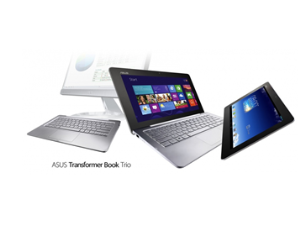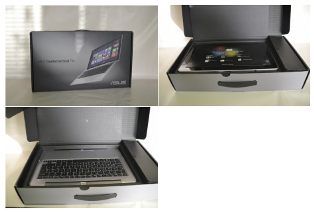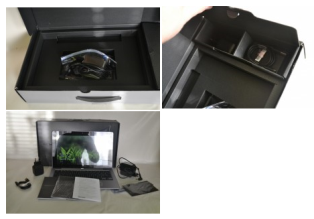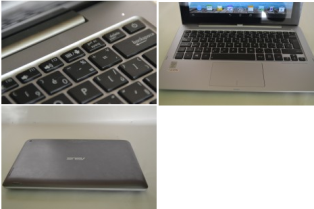Hello readers, this time we got to you all the important specifications and information of ASUS Transformer Book Trio, which is something extraordinary - this is a hybrid that combines a desktop computer, notebook, and tablet, the device will find a total of two operating systems - Android and Windows 8th. Let’s find that ASUS Transformer Book place equipment on the market?
Will the Elephone Finally be the True Tecno and Infinix Killer in 2015?
Gear of ASUS Transformer Book
= =>the tested version: ASUS Transformer Book Trio
= =>Display: 11.6 "IPS with a resolution of 1920 x 1080 pixels (HD) and fineness 190 ppi
= =>Processor: Base: quad-core Intel Core i7 4500M, Haswell, @ 1.8 GHz Tablet:
= =>GPU: Power SGX 544MP
= =>RAM: 4 GB base, 2 GB tablet
= =>Internal Memory: 500 GB base, 16GB tablet
= =>Rear Camera: 1.2 MP
= =>Front camera: 5MP
= =>Wi-Fi: (802.11 a / c / b / g / n)
= =>other connectivity: A-GPS, Bluetooth 3.0
= =>Connectors: micro-USB 2.0, 3.5 mm jack for headphones
= =>Sensors: accelerometer, G-sensor, digital compass, proximity
= =>Battery: Non-removable Li-pol with a capacity of 19,000 mAh (total capacity)
= =>Operating System: Android 4.2.2 Jelly Bean
= =>Dimensions: 304.8 x 193 x 9.7 mm
= =>Weight: 700 g of tablets 1000 g base
= =>Price at time of writing reviews: 26 599 CZK
Package Contents and first impressions
ASUS Transformer Book Trio comes home to a relatively large and heavy box that will be in black. On the front you will find illustrations devices on the sides then find the specifications of the device itself and various details about the product. After opening the box, it gets divided into two parts - the right and left. On the left side after lifting the lid on us peek tablet itself. Under the mat, which is located under the tablet, then you will find basic (dock), which contains Windows and Intel Core processor. Again, there is another shelf below and we followed a few manuals, warranty certificates, adapter for laptop, cloth to clean the screen and there is a ribbon cable to download important drivers and software.
In the right part of the package then find another adapter only has a MicroUSB cable, which allows you to charge the tablet, if you do not want to charge from the base of the device. As far as looking at the overall device, it seems to me very thick and heavy, making you feel like you're holding a piece of quality metal. The tablet size is above average and I have to admit that it takes a while to get used to it. Base weight is similar to the tablet again and I got the feeling that I hold very high quality equipment.
The tablet connectors found only on the lower edge of the tablet. Here you will find the Micro SD card slot, Micro-USB connector, to connect to the dock and climb to 3.5 mm headphones. When connected to the keyboard, however, disables all the connectors to the slot for Micro SD card. As for the base, with the connectors already find a little more. On the left side we find a headphone output and a USB port. On the right side you can find socket for power, another USB port, and a port mini VGA mini HDMI. The only thing I regret is that the device did not pack a reduction from USB to LAN - you therefore need to rely on wireless data transmission.
As for the buttons on the keyboard, see the function keys to work in both Windows and Android’s. In the same row of keys, there are also a toggle button on the Android / Windows and also making the entire base. The tablet then you will find only the buttons to turn the tablet buttons for volume up / down speakers.
The other thing I rebuked them was in the keyboard that they used only metal instead of plastic. Plastic is of course very hard and parts aligned perfectly together, making nothing did not creak.
Will the Elephone Finally be the True Tecno and Infinix Killer in 2015?
Gear of ASUS Transformer Book
= =>the tested version: ASUS Transformer Book Trio
= =>Display: 11.6 "IPS with a resolution of 1920 x 1080 pixels (HD) and fineness 190 ppi
= =>Processor: Base: quad-core Intel Core i7 4500M, Haswell, @ 1.8 GHz Tablet:
= =>GPU: Power SGX 544MP
= =>RAM: 4 GB base, 2 GB tablet
= =>Internal Memory: 500 GB base, 16GB tablet
= =>Rear Camera: 1.2 MP
= =>Front camera: 5MP
= =>Wi-Fi: (802.11 a / c / b / g / n)
= =>other connectivity: A-GPS, Bluetooth 3.0
= =>Connectors: micro-USB 2.0, 3.5 mm jack for headphones
= =>Sensors: accelerometer, G-sensor, digital compass, proximity
= =>Battery: Non-removable Li-pol with a capacity of 19,000 mAh (total capacity)
= =>Operating System: Android 4.2.2 Jelly Bean
= =>Dimensions: 304.8 x 193 x 9.7 mm
= =>Weight: 700 g of tablets 1000 g base
= =>Price at time of writing reviews: 26 599 CZK
Package Contents and first impressions
ASUS Transformer Book Trio comes home to a relatively large and heavy box that will be in black. On the front you will find illustrations devices on the sides then find the specifications of the device itself and various details about the product. After opening the box, it gets divided into two parts - the right and left. On the left side after lifting the lid on us peek tablet itself. Under the mat, which is located under the tablet, then you will find basic (dock), which contains Windows and Intel Core processor. Again, there is another shelf below and we followed a few manuals, warranty certificates, adapter for laptop, cloth to clean the screen and there is a ribbon cable to download important drivers and software.
In the right part of the package then find another adapter only has a MicroUSB cable, which allows you to charge the tablet, if you do not want to charge from the base of the device. As far as looking at the overall device, it seems to me very thick and heavy, making you feel like you're holding a piece of quality metal. The tablet size is above average and I have to admit that it takes a while to get used to it. Base weight is similar to the tablet again and I got the feeling that I hold very high quality equipment.
The tablet connectors found only on the lower edge of the tablet. Here you will find the Micro SD card slot, Micro-USB connector, to connect to the dock and climb to 3.5 mm headphones. When connected to the keyboard, however, disables all the connectors to the slot for Micro SD card. As for the base, with the connectors already find a little more. On the left side we find a headphone output and a USB port. On the right side you can find socket for power, another USB port, and a port mini VGA mini HDMI. The only thing I regret is that the device did not pack a reduction from USB to LAN - you therefore need to rely on wireless data transmission.
As for the buttons on the keyboard, see the function keys to work in both Windows and Android’s. In the same row of keys, there are also a toggle button on the Android / Windows and also making the entire base. The tablet then you will find only the buttons to turn the tablet buttons for volume up / down speakers.
The other thing I rebuked them was in the keyboard that they used only metal instead of plastic. Plastic is of course very hard and parts aligned perfectly together, making nothing did not creak.







Social Plugin